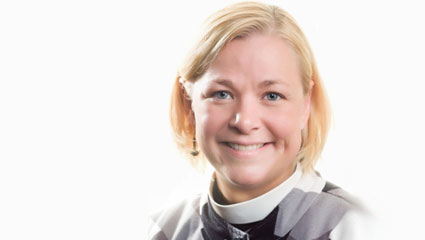Every so often, the issue of “sin” vs. “brokenness” comes up, and it always catches my attention.
Sometimes it happens in an adult education class, sometimes in a pastor meeting, and sometimes on Facebook. Words make a difference, and I’m interested in the way words function and how they are understood. When it comes to words, I’m always looking for a way to describe things that is both helpful to the hearer and the speaker, and moves the discussion forward, giving us more insight than what we had before.
I understand why some claim that there is no substitute for the word “sin.” They worry that anything else is a cop-out and ignores the totality of humanity’s separation from God and one another. I appreciate the concern. My own definition of sin, straight out of my seminary training, is “the state of being separated from God and from neighbor.” This state of being is manifested in our countless thoughts and actions that betray God and hurt one another. We struggle in vain to escape it on our own, which is why Jesus is Good News. I use the concept frequently in preaching and teaching, and encourage conversation about it in my congregation.
But that doesn’t keep me from seeing the value in other words, especially brokenness. “Brokenness” is an important word in our house right now, because we are the parents of a small child. Annika is now approaching three, and seeking to verbalize her experiences of the world around her. One of her current fascinations is with things that are broken. She will stop what she is doing and travel the length of the house to bring me two halves of a purple crayon, showing them to me and saying, “Mommy, it’s broken.”
Why does she do this? I suspect that part of it is that she wants me to share in a little grief with her. Broken toys are sad things. In addition, however, she wants to know if broken things are fixable. And she is rapidly learning the truth that sometimes they are, and sometimes they are not. Some broken toys simply need new batteries; others will never work again. Some broken things are salvageable, like cookies. Others are maddening, like crayons. You can tape a broken crayon, but it will never be the same. It will always look and feel “broken.”
What if people understood the church this way, as a place to bring the broken pieces? Personally, I like the idea. I like the image of God’s people bringing their broken pieces to one another, providing accountability for one another and grieving together the loss of the whole. I like the idea of us talking together, in the pulpit, in the church kitchen, and in the annual meeting, about just how many things are broken in our world, our families, and in our own minds and hearts, and how we respond to both the fixable and the unfixable.
Our response to the fixable is one of hope and support. We celebrate that some broken things can be fixed, not in a “6 easy ways to give you a better life than your sister” kind of way, but in a way that bears witness to God’s creative power. We do this by being places of accountability for addiction, hate, or selfishness, or simply in the way we try, imperfectly, to seek the will of God. Every time healing comes to something that is broken, we rejoice in God’s mercy and faithfulness.
In many ways, however, the strength of the church’s witness is not with the stuff that can be fixed, but the stuff that cannot. We are honest about the finality of some kinds of brokenness, and we grieve that together. We are also honest about our inability to fix even the fixable, and our need for God in all circumstances. And we articulate our trust in our God who specializes in using broken pieces for something good.
I don’t think the use of “brokenness” in this way denies or diminishes our relationship to “sin.” I think it’s a sensory word that gives flesh and bones to that gut feeling most people have that things in the world just aren’t right, whether they are fixable or not. Like Annika, we use the concept of brokenness to learn and to grow in our understanding of ourselves and our world where pain and destruction are pervasive and relentless.

